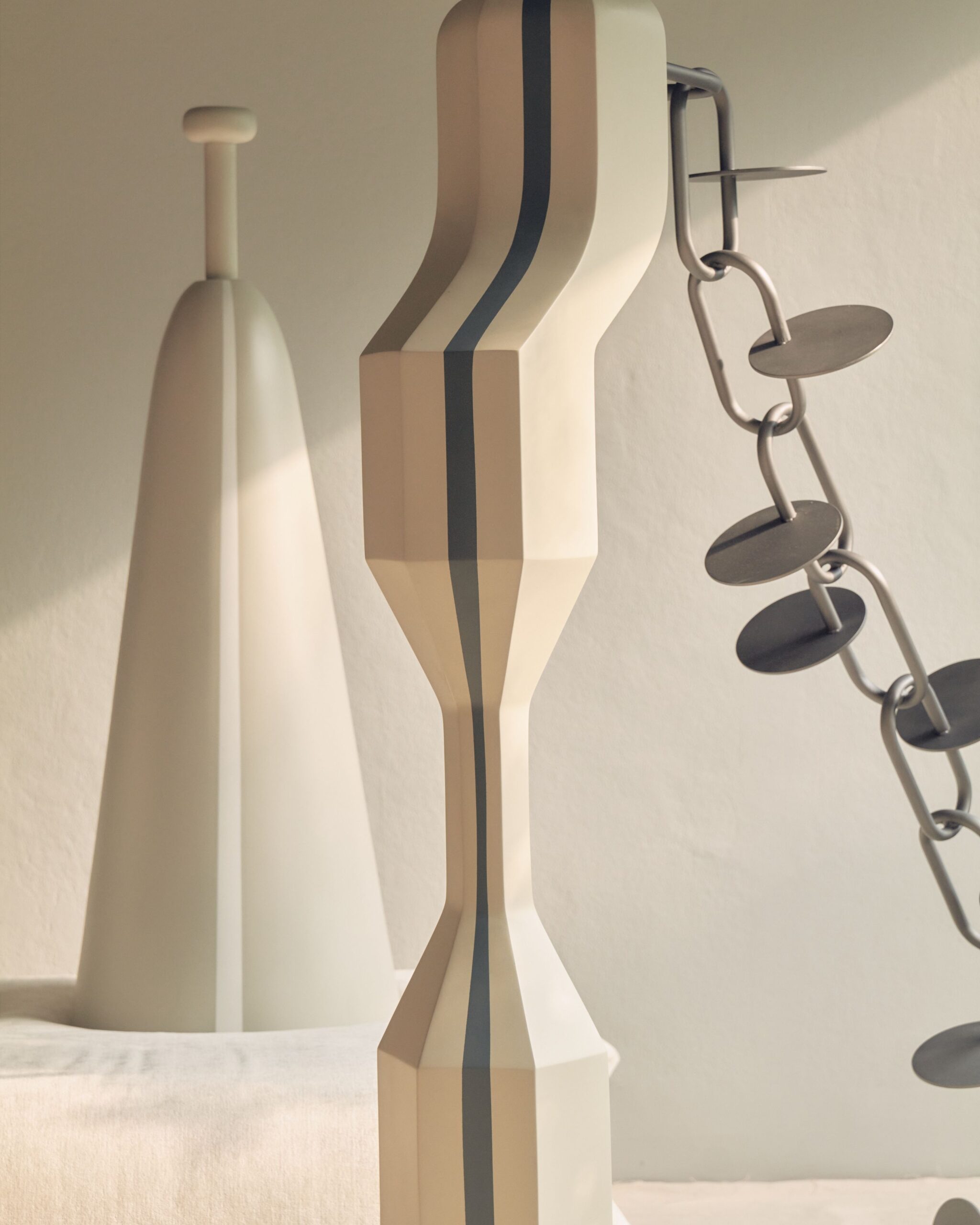PRESERVING HERITAGE THROUGH ART & THE POWER OF FEMALE RESISTANCE IN IRAN
Interview by Prashant Ashoka
Find the Pahlevoon Collection in our Materia Shop
Materia talks to architect and artist Saba Yazdjerdi, whose work investigates her Iranian heritage and explores themes of identity and belonging through object, spaces, and materials. We speak to her from her current residence in San Francisco about her creative process, her female Iranian heroes and what we can do to support the current movement for freedom in Iran.

Prashant Ashoka: Your grandfather was your muse for the Pahlevoon series – could you tell us a little about him and his role in the sport of Pahlevani?
Saba Yazdjerdi: My grandfather had a mill in Iran where we produced flour. Upon his death he was referred to as the father of bread in Iran, and the operation of this mill was his main job. But his main passion was the sport of Pahlevani. He helped revive its popularity in the decades after the revolution by holding events within Iran as well as in neighbouring countries. Pahlevani is a performative sport and it has rhythmic music that accompanies it. But it also is a body building element to it, as well as various rituals and a respect for elders that practitioners adhere to. I have childhood memories of going to his home and seeing my grandfather on magazine covers for his role in the preservation and revival of Pahlevani.
PA: Could you tell us a little about your upcoming 2023 collection, and which aspect of Iranian culture you have drawn inspiration from?
SY: My new collection will relate more closely to my background in architecture as well as drawing inspiration and references from the current movement for freedom in Iran. The new collection will be an ode to the courage of young Iranian women in rising against this despotic regime.
PA: Could you describe your creative process?
SY: Being a trained architect, function and creating aesthetic solutions that address the needs of the client is the driver for how we usually start the design process. And with my personal collection my process starts from storytelling. Through my research I find stories that inspire and speak to what Iranian culture is. It is also a reclaiming of our identity that we’ve lost for so many years. So my work is the marriage of my own personal narrative, the history of Iranian traditions, and the functionality of design that is informed by my training as an architect.

“Through my research I find stories that inspire and speak to what Iranian culture is. It is also a reclaiming of our identity that we’ve lost for so many years. So my work is the marriage of my own personal narrative, the history of Iranian traditions, and the functionality of design that is informed by my training as an architect.”
—SABA YAZDJERDI
PA: Can you describe the power of an object to hold our collective histories?
SY: I think our current experience of life is saturated with content from media and the digital world which slices and dices our attention. So as a counter to this I think the physicality of an object can be a really bold and powerful medium to capture the attention of an audience. My pieces are interactive and drawn inspiration from the shapes of traditional and historical artefacts. Each piece holds within it a story and history. An example of one of my pieces is a mirror that has its center cut out to omit the face and make the viewer aware of their surroundings. In this way the physical interaction with the piece is crucial to experiencing it and that is why it is important that they are material objects and not just digital pieces.
PA: Could you tell us about your childhood in Iran and the moment you knew you wanted to be an artist?
SY: My biggest inspiration is definitely my mother who passed on when I was very young. She was an architect and I have always adored and respected her. She inspired my foray into and love for architecture. I started my career as an architect in New York and that experience really showed me how beautiful and impactful architecture can be.

PA: What are your favorite Iranian traditions?
SY: Yaldā, which is the winter solstice and the longest night of the year, is my favorite Iranian tradition. We celebrate Yaldā by drinking wine and reading poetry. It is a time of connection to our history and heritage which is so important and meaningful, ever more so in this time with the great loss of identity Iranians have experienced. Many people are unaware of the long history of our land and the greatness that it was because much of it has been eclipsed by the Islamic Republic that now nearly all of us have been born into.
PA: What are your hopes for the future?
SY: For my personal future I hope to have my own architecture firm one day and continue my work in the field. And for the future of Iran, I hope that it becomes a democratic and fair society for all. Although we are going through a period of pain and violence, I am still very hopeful as I believe this is the birthing of a new future for us.
PA: Who are your female Iranian heroes?
SY: The power and strength of Iranian women is very evident through history. I admire Shirin Ebadi who was awarded the Nobel Peace Prize for her significant and pioneering efforts for democracy and human rights, especially women’s, children’s, and refugee rights.
Another powerful woman is Maryam Mirzakhani who was honored with the Fields Medal, the most prestigious award in mathematics, becoming the first Iranian to be honored with the award and the first of only two women to date.
And there is Forugh Farrokhzad the pioneering Iranian poet, who was the first woman to evoke female sexuality in Persian verse, and who is considered one of most important figures in modern Iranian literature.


PA: If there is one thing you’d like the rest of the world to know or do in support of the Iranian community, what would that be?
SY: I think the best thing the world can do for Iran right now is to amplify Iranian voices, and specifically those of women. Through the reach and influence of social media we must continue to tell the stories of the heros who are fighting for freedom in Iran. It is also because of social media that the frustration of Iranian people at the atrocities of the current regime have come to light. By educating yourself on the plight of Iranians, reading the stories of our slain heroes, and amplifying the voices of the subjugated we make the world take notice. And when the eyes of the world is upon Iran it makes it harder for the government to kill as easily as they do.
Discover the Saba Yazdjerdi Pahlevoon Collection here.











